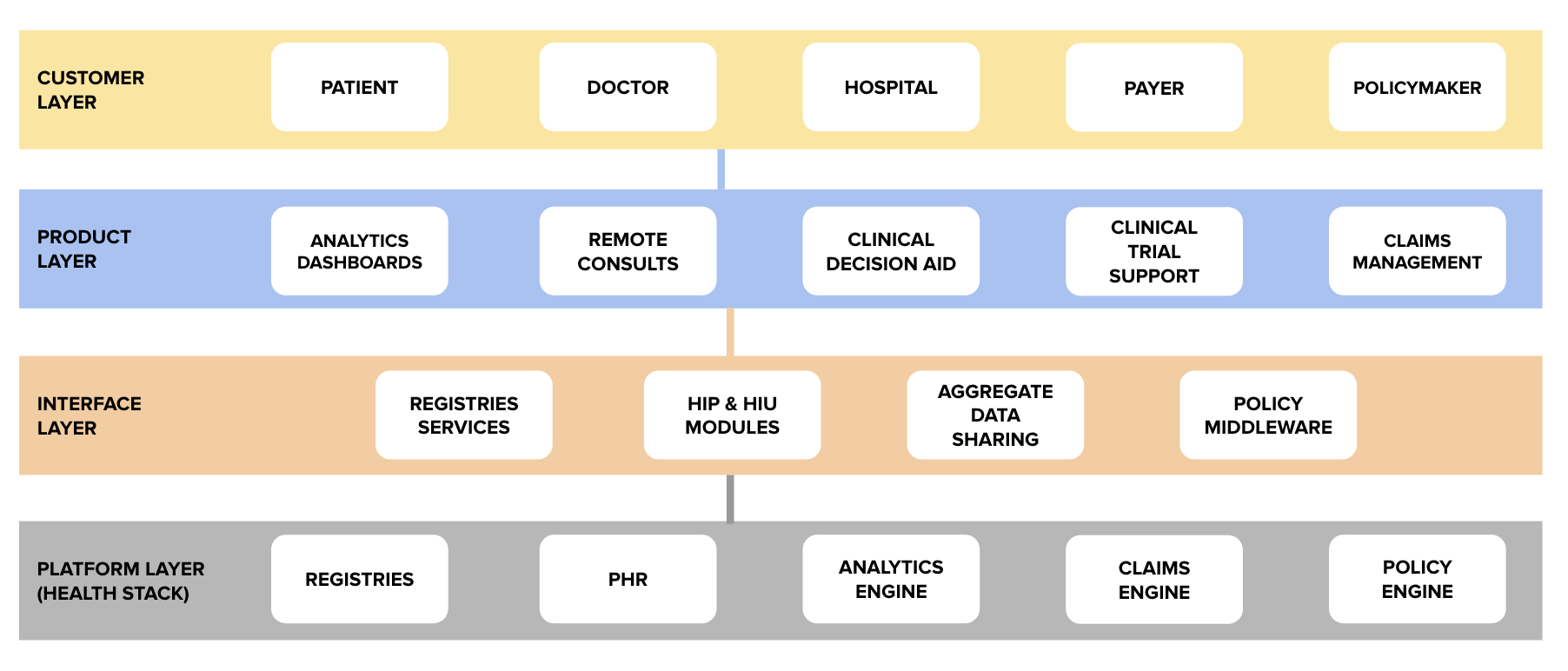The National Health Stack is a set of foundational building blocks which will be built as shared digital infrastructure, usable by both public sector and private sector players. In our third post on the Health Stack (the first two can be found here and here), we explain how it can be leveraged to build solutions that benefit different stakeholders in the ecosystem.
Healthcare Providers
- Faster settlement of claims: Especially in cases of social insurance schemes, delay in settlement of claims causes significant cash-flow issues for healthcare providers, impacting their day-to-day operations. The claims and coverage platform of the health stack is meant to alleviate this problem through better fraud detection and faster adjudication of claims by insurers.
- Easier empanelment: The role of facility and provider registry is to act as verified sources of truth for different purposes. This means a convenient, one-step process for providers when empanelling for different insurance schemes or providers.
- Quality of care: The use of personal health records can enable better clinical decision making, remote caregiving and second opinions for both patients and medical professionals.
Insurers
- Faster and cheaper settlement of claims: claims and coverage platform, as described above
- Easier empanelment of healthcare providers: registries, as described above
- Diverse insurance policies: In addition to the above benefits, the policy engine of the healthstack also seeks to empower regulators with tools to experiment with different types of policies and identify the most optimum ones
Researchers and Policymakers
- Epidemiology: the analytics engine of the healthstack can be helpful in identifying disease incidence, treatment outcomes as well as performance evaluation of medical professionals and facilities
- Clinical trials: a combined use of analytics and PHR can help in identifying requirements and potential participants, and then carrying out randomised controlled trials
How can it be leveraged?
While the healthstack provides the underlying infrastructure, its vision can be achieved only if products benefitting the end consumer are built using the stack. This means building solutions like remote second opinions using health data from healthcare systems, as well as developing standard interfaces that allow existing systems to share this data. In the diagram below, we elaborate on potential components of both of these layers to explain where innovators can pitch in.
If you are building solutions using the health stack, please reach out to me at anukriti@ispirt.in!


